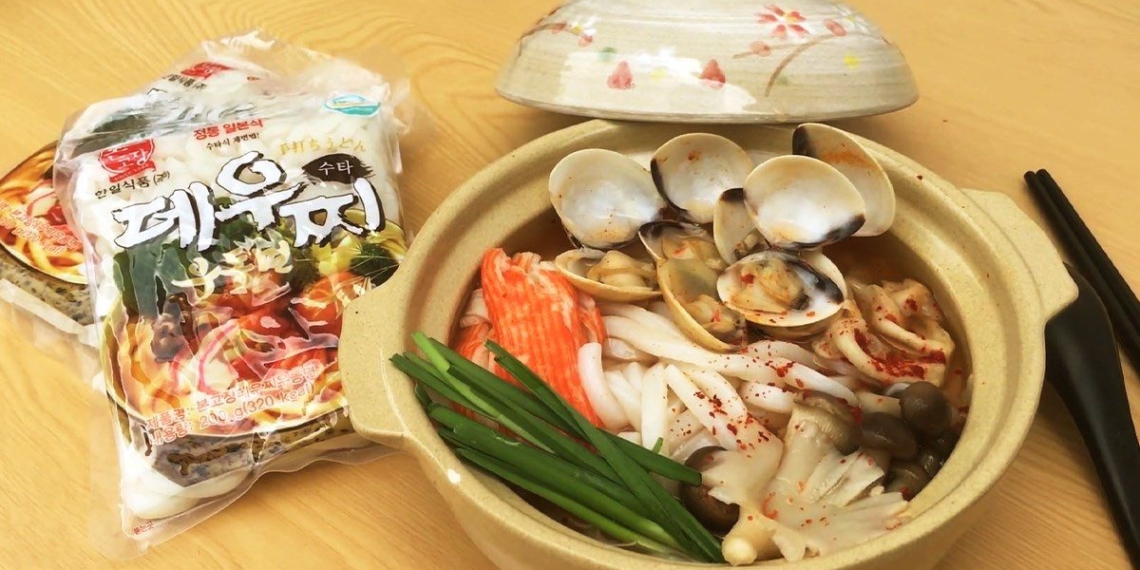Udon noodles are a Japanese dish but are also quite familiar to Vietnamese people with many creative variations and combinations. Today, TasteVN will go to the kitchen to share with you 3 ways to cook udon noodles!
1. Clam Udon
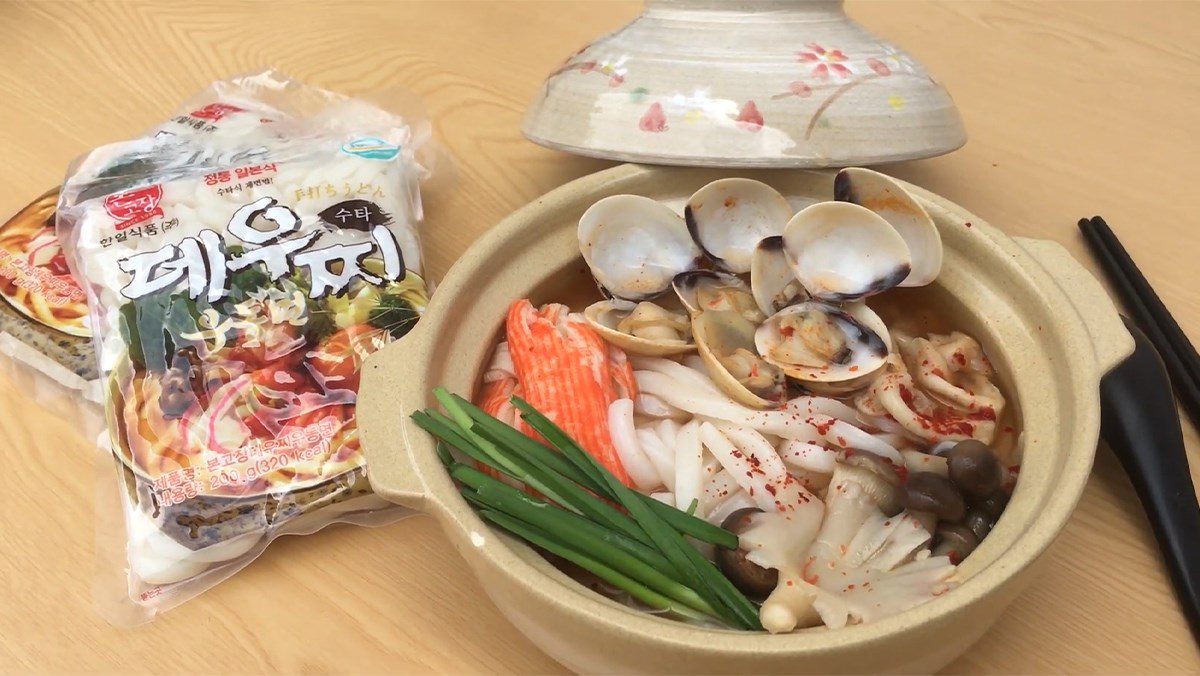
-
Preparation
2 hours
-
Cooking
20 minutes
-
Difficulty
Medium
Ingredients for Clam Udon Serves 1
Crab sticks 3 pieces (surimi) Chives 20 gr Lemon 1 slice Ginger 30 gr Clams 200 gr (ngao) Udon Noodles 1 pack Shiitake mushrooms 50 gr Lemongrass 7 stalks Oyster mushrooms 50 gr
How to choose fresh clams
- Choose clams with hard shells, tightly closed mouths, and feel heavy in hand. If the clam is very light and can be easily pried open, it is dead.
- For clams that have their mouths open, if you touch them and they close their mouths, it means they are still alive and fresh.
Ingredient images
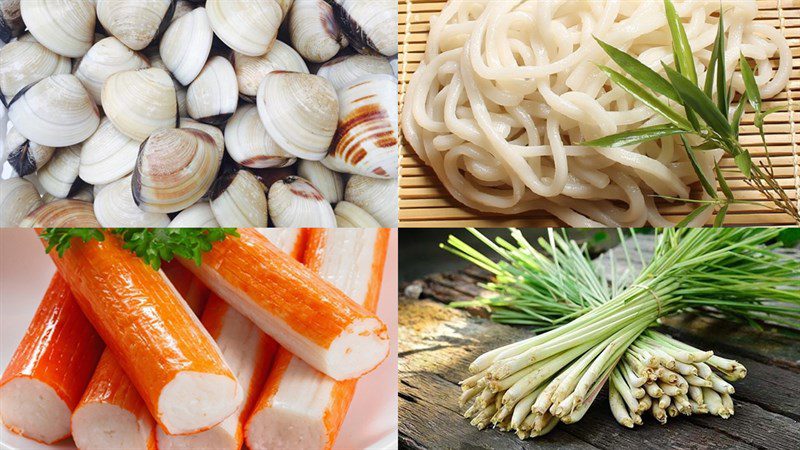
How to prepare Clam Udon Noodles
-
Preparing the clams
After buying the clams, remove the dead ones, soak the clams in water for about 2 hours with a few pieces of chili to help the clams expel sand, scrub the shells clean, and rinse with clean water, then drain.
Tip for cleaning clams of sand
- You can use warm water at about 50 degrees Celsius to make the clams expel sand more quickly. In water at 50 degrees Celsius, the clams will feel threatened and will protect themselves by absorbing more water, thus speeding up the sand expulsion process.
- Usually, it only takes 10 minutes for the clams to be clean and ready for cooking. However, this method requires the correct temperature; otherwise, the clams will cook.
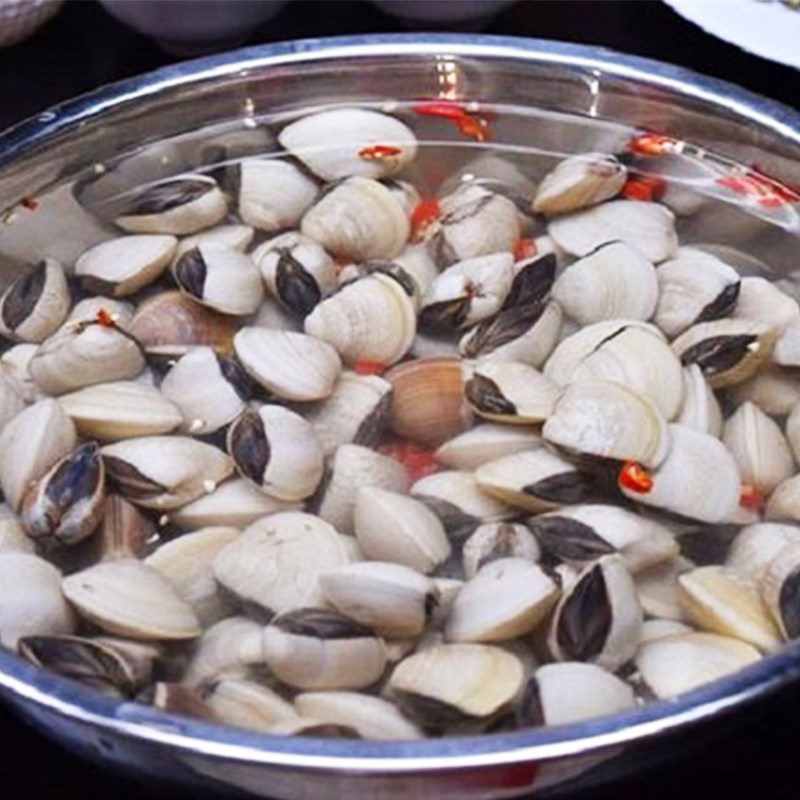
-
Preparing the vegetables
Wash the shiitake mushrooms and oyster mushrooms and cut off the stems.
Wash the chives, cut the leaves to about 10cm. Wash the lemongrass and cut off the roots. Peel the ginger and cut it into pieces.
Boil some water, add the Udon noodles and cook for about 2 minutes, then remove and dip in cold water to remove impurities from the noodles and make them firmer.
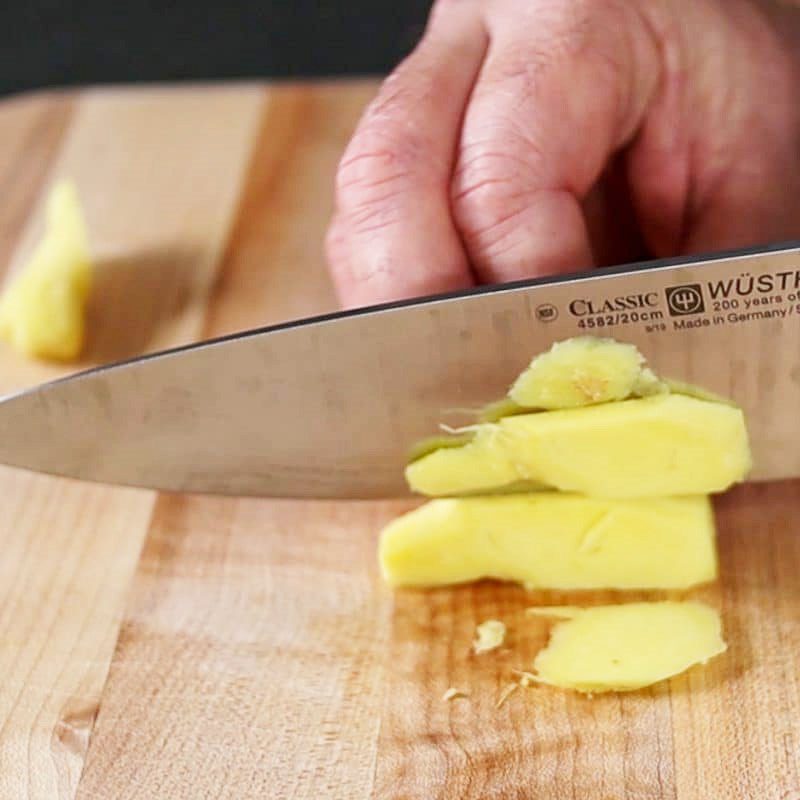
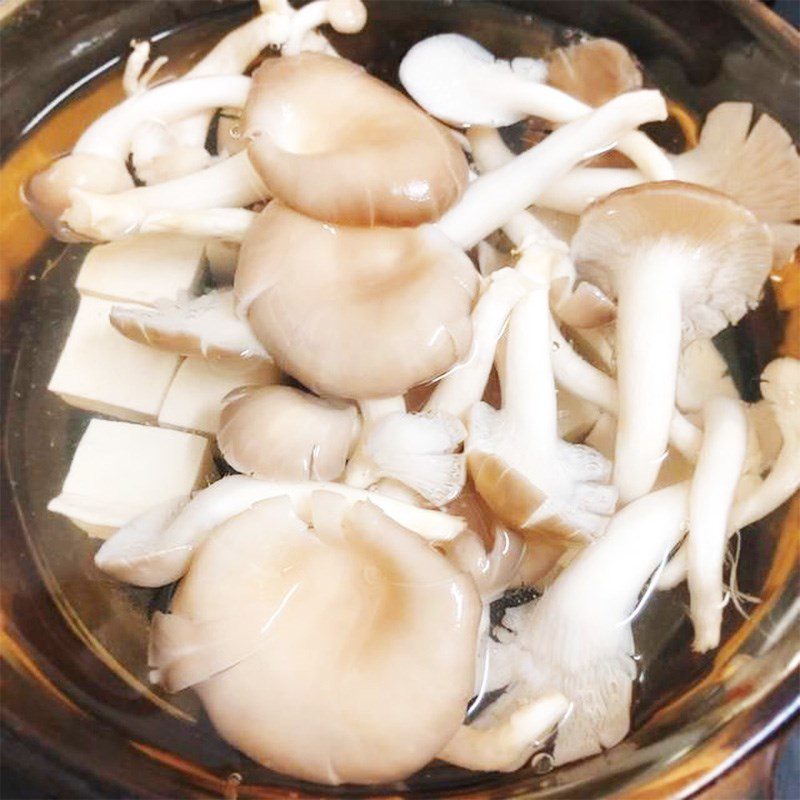
-
Cooking udon broth
Place another pot on the stove, add lemongrass, ginger, clams, and 200ml of water, and boil for about 1 minute and 30 seconds.
Then, remove the lemongrass and ginger, continue adding 1/2 teaspoon of salt, 1 teaspoon of sugar, 1 teaspoon of seasoning, 1/2 teaspoon of chili powder, and surimi, and 2 types of mushrooms, and cook for an additional 1 minute and 30 seconds.
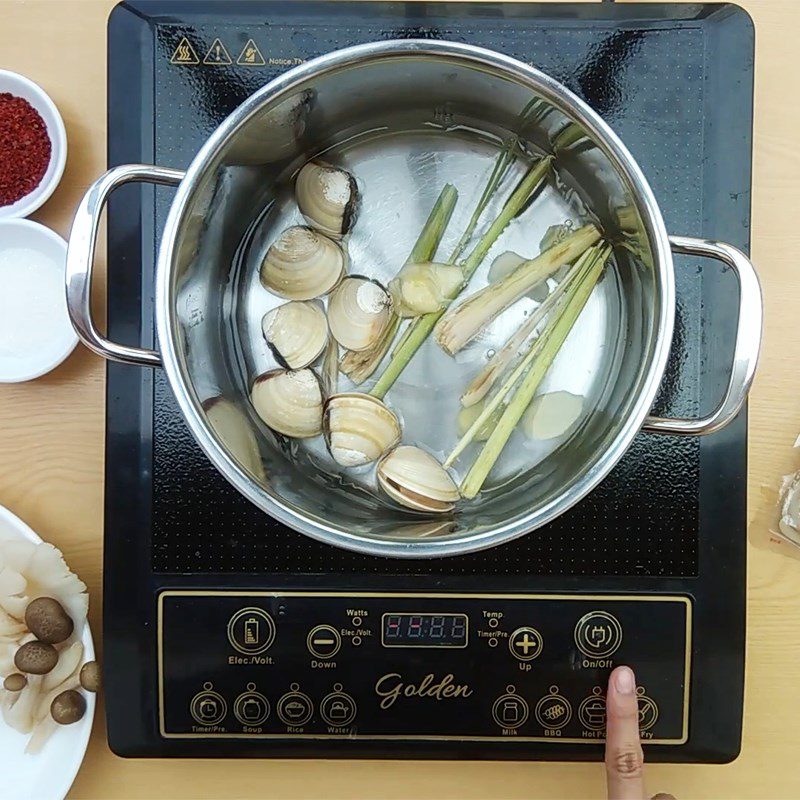
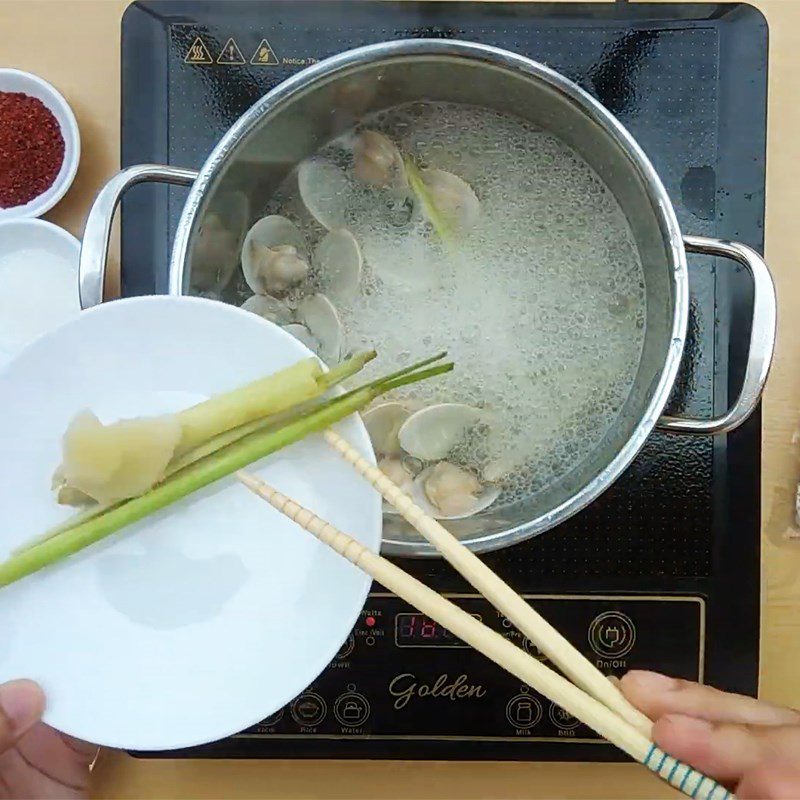
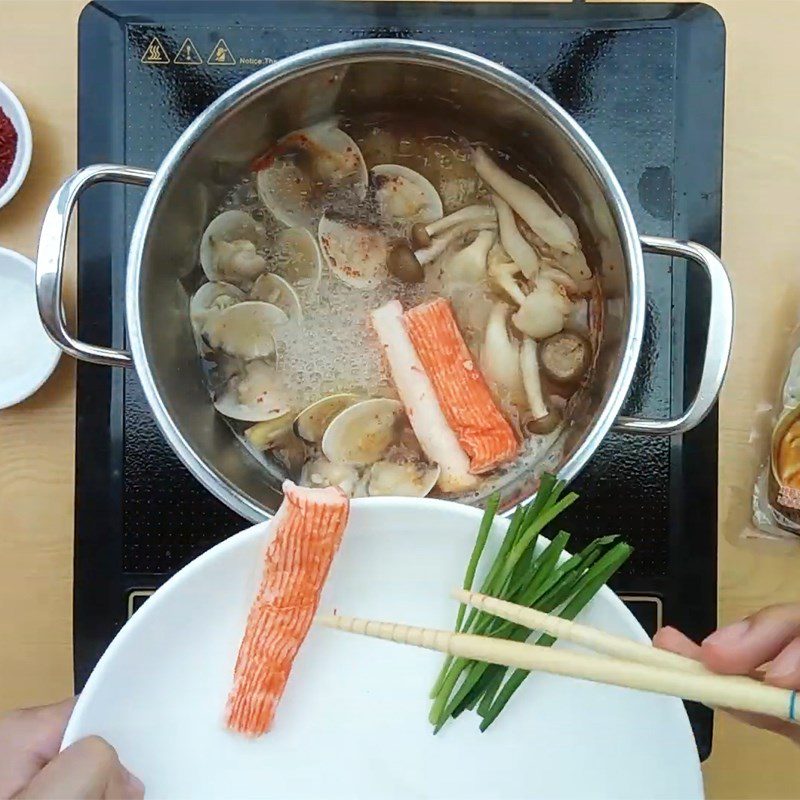
-
Final product
Put the noodles in a bowl (or clay pot), add the clams along with the other ingredients into the pot. Finally, pour the broth over the noodles and the udon dish is complete.
The udon noodles are chewy, the broth is sweet and light, along with the delicious clam meat, all blend together, making you want to eat it without getting tired of it.
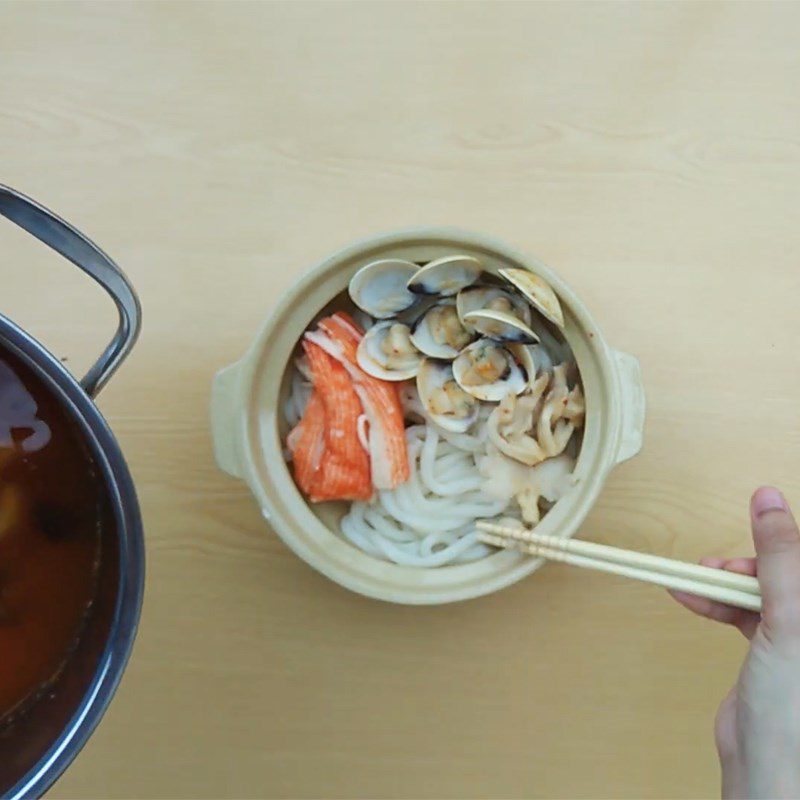
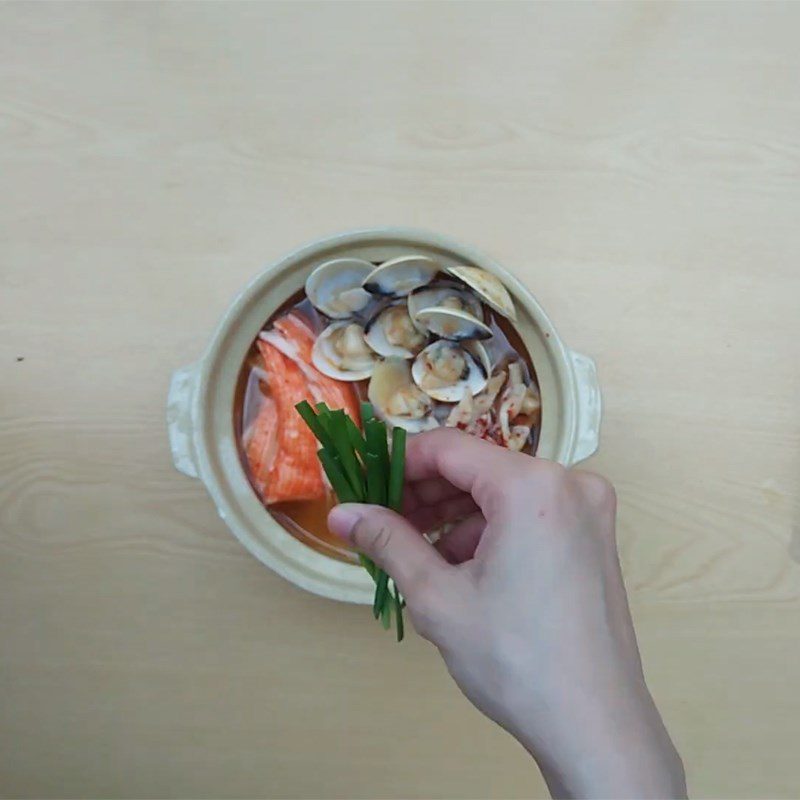
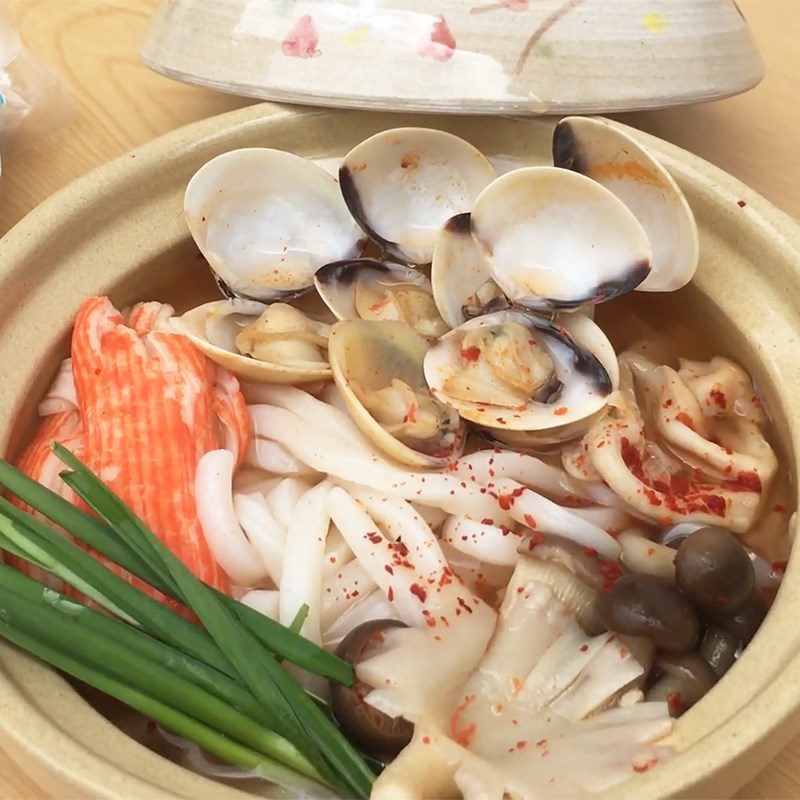
2. Seafood and vegetable udon
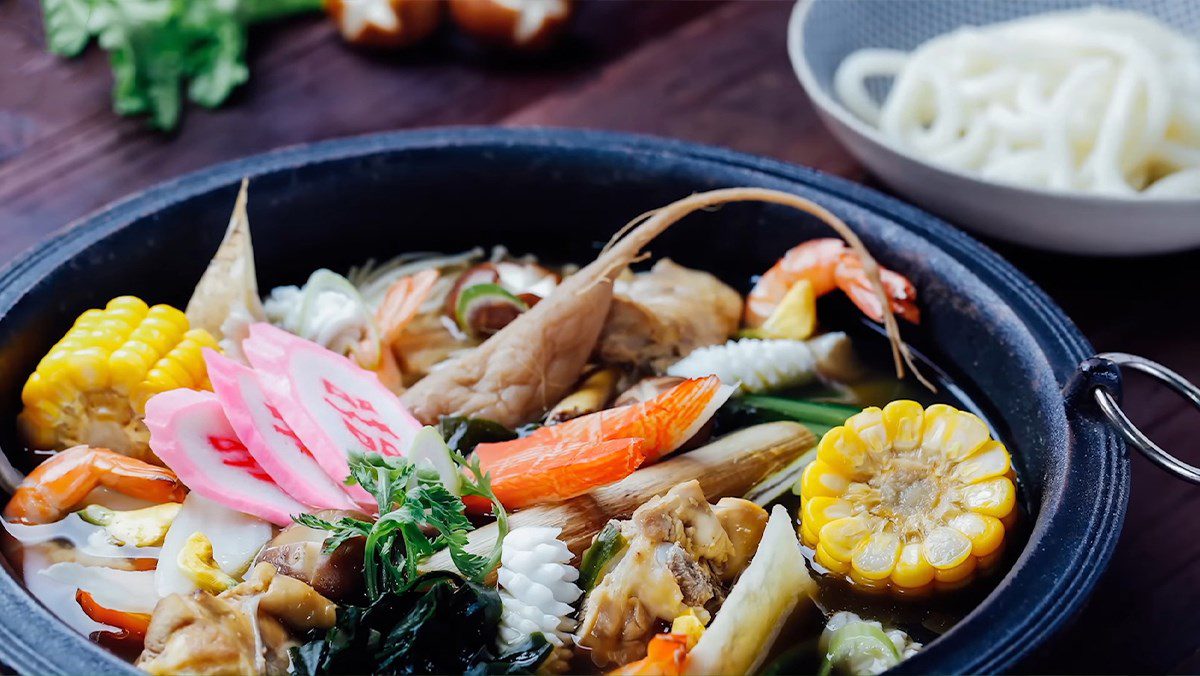
-
Preparation
40 minutes
-
Difficulty
Medium
Ingredients for Seafood Udon Noodles with Vegetables Serves 4
Goji berries 1 teaspoon Salted mustard greens 3 bulbs Bottle gourd 3 fruits Kelp 3 pieces (konbu) Sugarcane 3 pieces Carrot 6 bulbs Broccoli 6 pieces Shiitake mushrooms 600 gr Oyster mushrooms 600 gr Enoki mushrooms 100 gr Corn 3 fruits Ginger 600 gr Napa cabbage 600 gr Amaranth 600 gr Cassava 3 bulbs Sake 2 tablespoons Sugar water 1 tablespoon Udon noodles 500 gr Shrimp 200 gr Squid 300 gr Kikkoman soy sauce 450 ml Kamaboko fish cake 200 gr Chicken 200 gr Crab sticks 12 pieces (surimi)
How to choose fresh ingredients for seafood udon noodles
How to choose good shrimp
- If buying frozen shrimp, you must choose shrimp that still have all parts intact, feel firm, naturally tender, and especially do not have a fishy or spoiled smell.
- Choose live shrimp to ensure freshness, with a glossy shell, looking healthy; when you squeeze the shrimp, it should feel elastic, and the shell should not be too soft.
How to choose fresh squid
- Color: You should choose squid with a dark brown color and a shiny body surface.
- Firmness: Fresh squid will have high elasticity and be firm.
- Squid tentacles: To distinguish fresh squid by its tentacles, pay attention to the suckers on the tentacles. The more suckers there are, the fresher your squid is.
How to choose good chicken
- You can buy live chickens and clean them yourself, but for convenience, you should buy pre-cleaned chickens.
- If you buy pre-cleaned chicken: You should choose native chicken with a light yellow skin color; do not buy chicken with white skin because that is super chicken which is not as tasty. You can press it with your hand; if the meat is still firm, then you should buy it.
Note: You can buy Kikkoman soy sauce, dried kelp, and kamaboko fish cake at Japanese food stores or large supermarkets.
Ingredient images
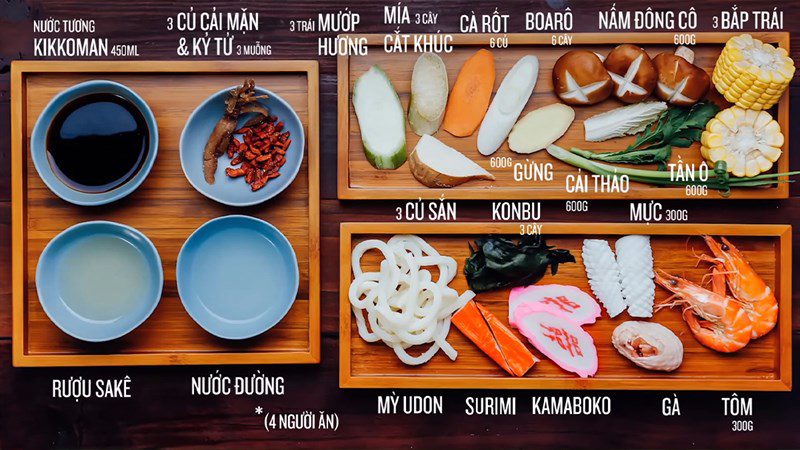
How to prepare Udon noodles with seafood and vegetables
-
Prepare the seafood
Clean the squid, removing the tentacles and pulling them out of the body. Next, you need to remove unnecessary parts such as the ink sac, membrane, brown digestive sac, and spine.
Then rinse with diluted salt water to clean thoroughly, while also eliminating the fishy smell of the squid. Cut the squid in diagonal lines without cutting all the way through and cut back again so that when cooked, the squid will puff up more beautifully.
Wash the chicken with diluted salt water and cut into bite-sized pieces.
Wash the shrimp and let them drain.
Tip:
You can refer to the secret of eliminating the fishy smell from seafood easily from TasteVN to make the dish tastier!
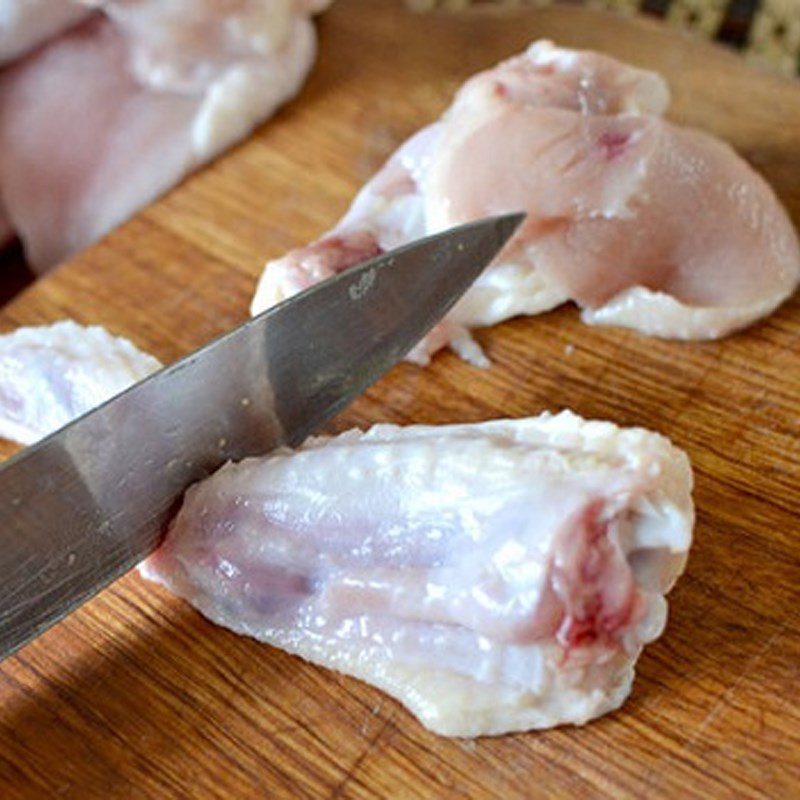
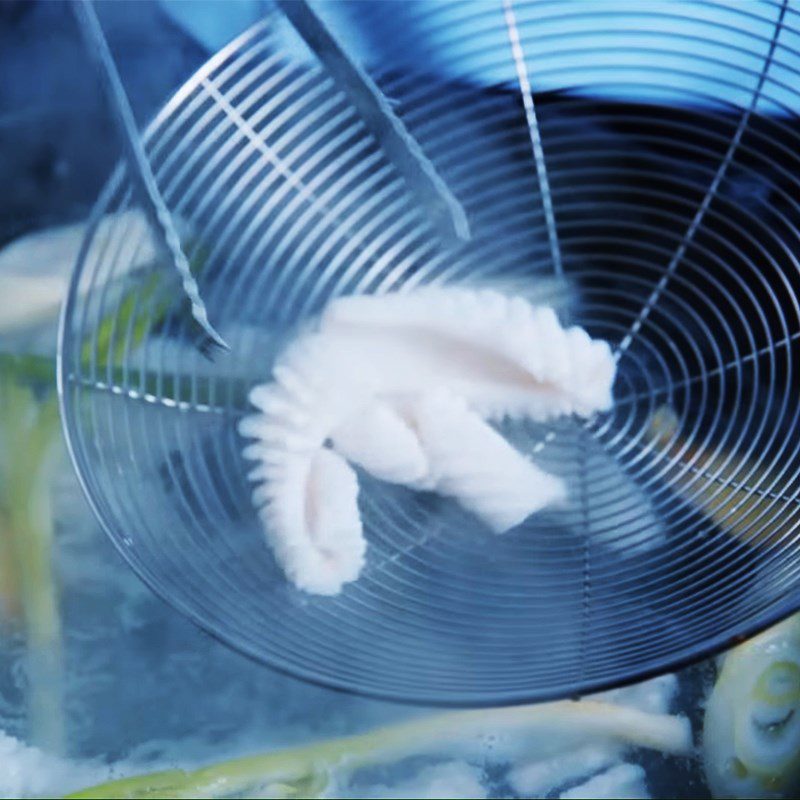
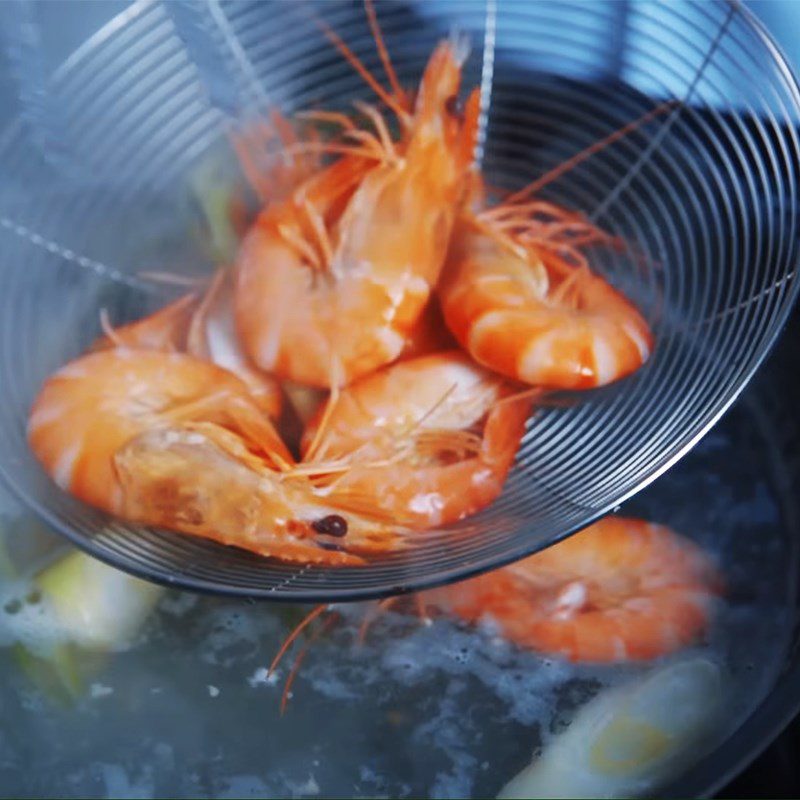
-
Prepare the vegetables
Cut Kamaboko into bite-sized slices. Cut the crab sticks (surimi) diagonally in half.
Remove the stems from the shiitake mushrooms, enoki mushrooms, and oyster mushrooms (you can make a cross cut on the top of the shiitake mushrooms to help them cook faster and look nicer!).
Peel the loofah and daikon radish, wash them thoroughly, and cut them into bite-sized pieces. Slice the green onions into bite-sized pieces.
Wash the cassava thoroughly and cut it into wedges. Cut the corn into pieces and slice the ginger.
Boil a pot of water on the stove, add the whole green onions, a few slices of ginger, and the green onion into the water to blanch the seafood. Once the water is boiling, add the squid and shrimp in turn to blanch briefly, then take them out and soak them in ice water (or cold water).
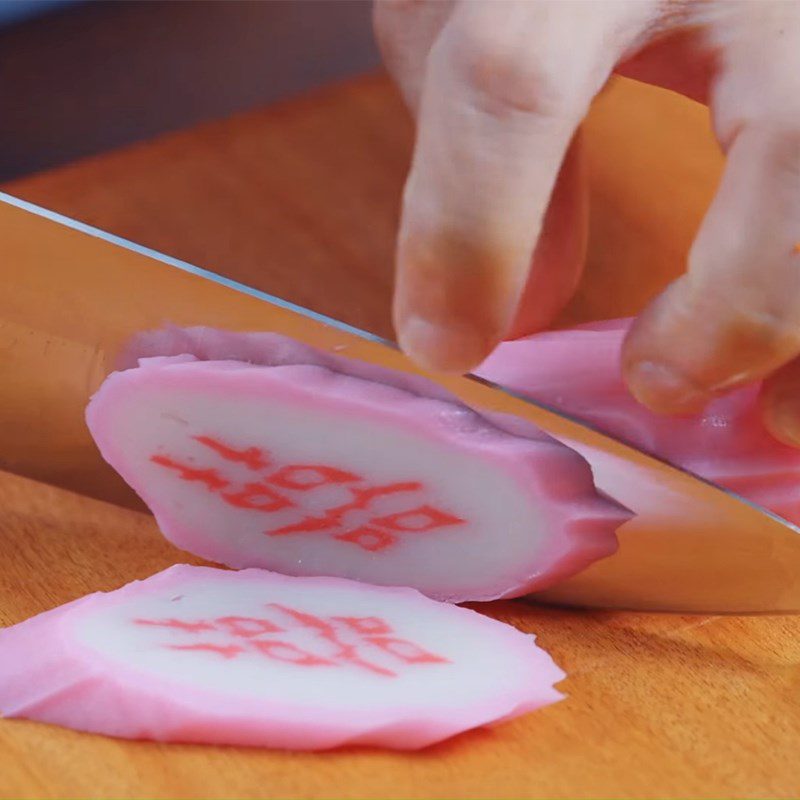
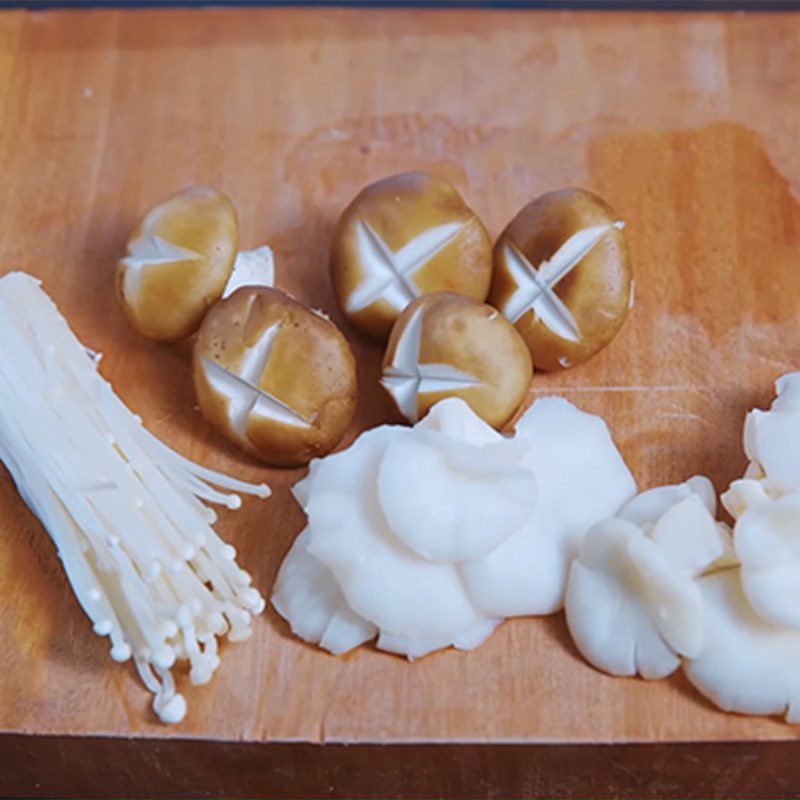
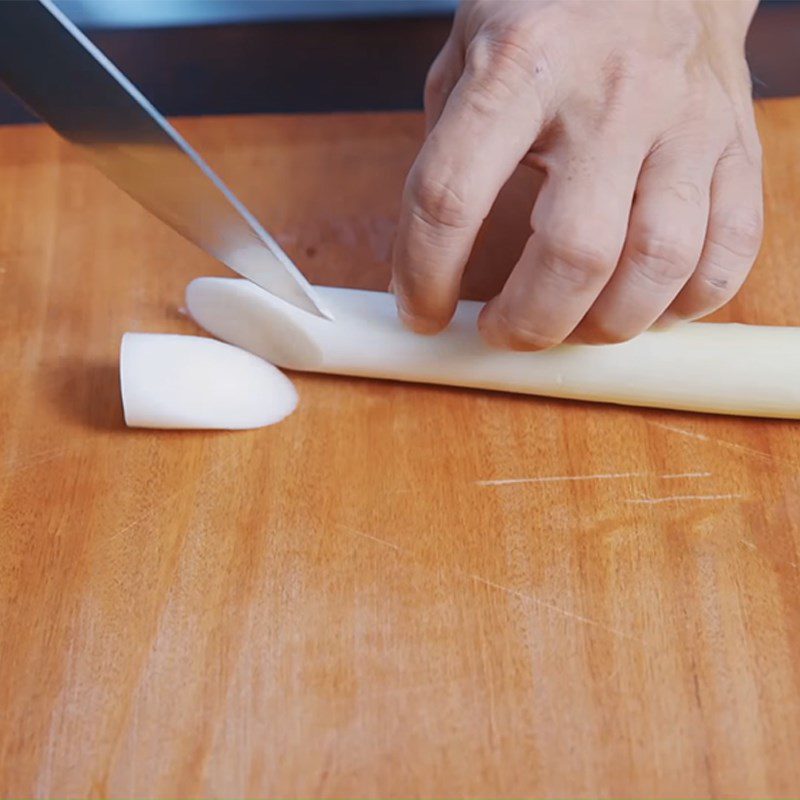
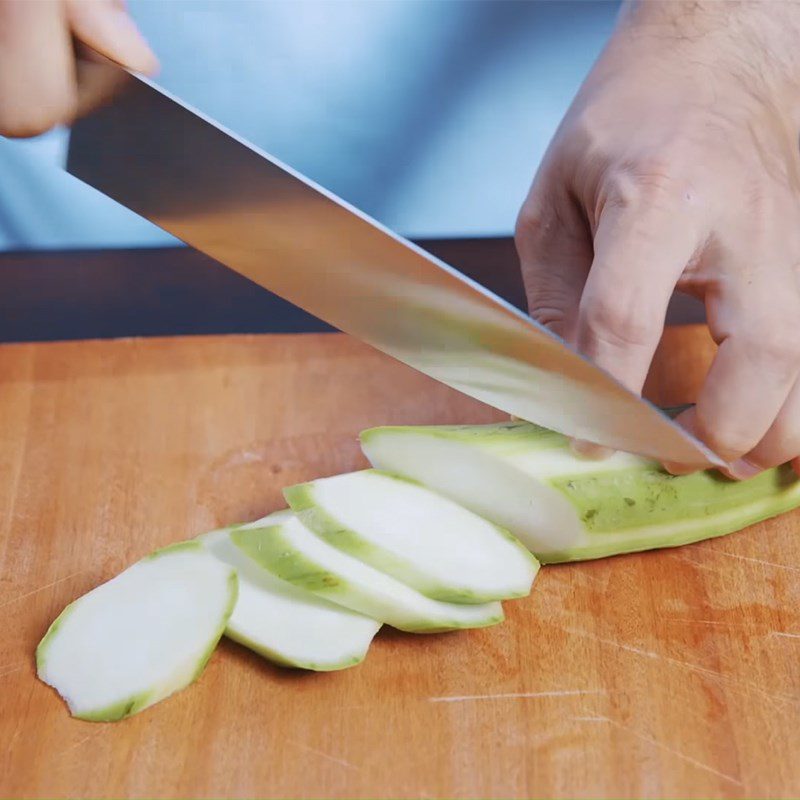
-
Stir-fry the ingredients
Heat a pan on the stove, wait for it to get hot, add oil, and toss in a few slices of ginger and green onion to stir briefly, then add the chicken to stir-fry briefly.
Add in turn the carrots, cassava, loofah, the three types of mushrooms, corn, and pickled radish, and stir well in the pan.
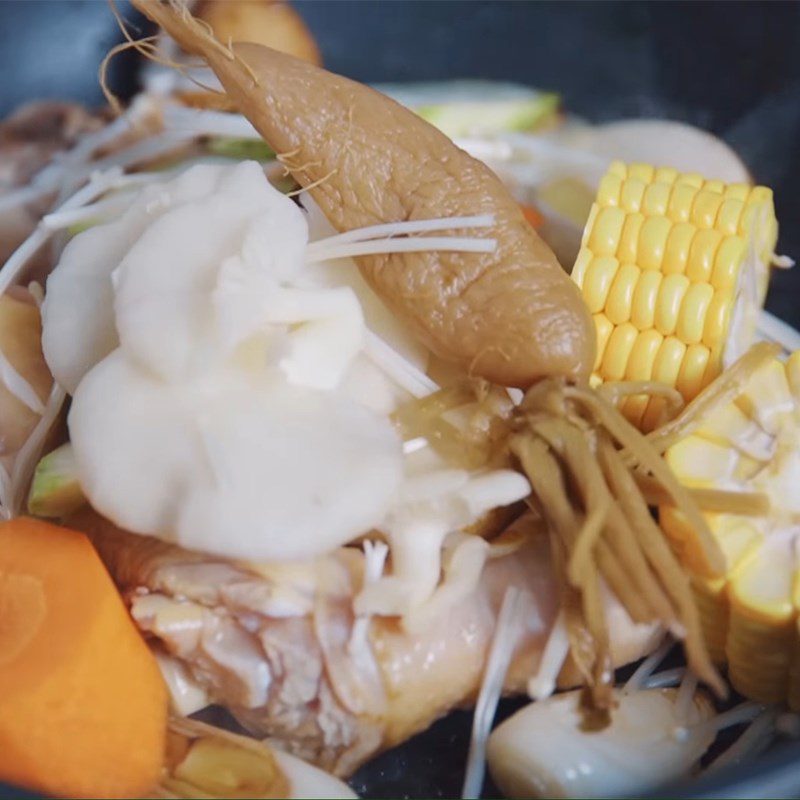
-
Making Udon Broth
Sauté various vegetables and mushrooms for about 1 minute, then add water to the pan and bring to a boil. Add sugar cane to the pan, then add 1 teaspoon of goji berries, 2 tablespoons of sake, 1 tablespoon of Kikkoman soy sauce, 1 tablespoon of sugar water.
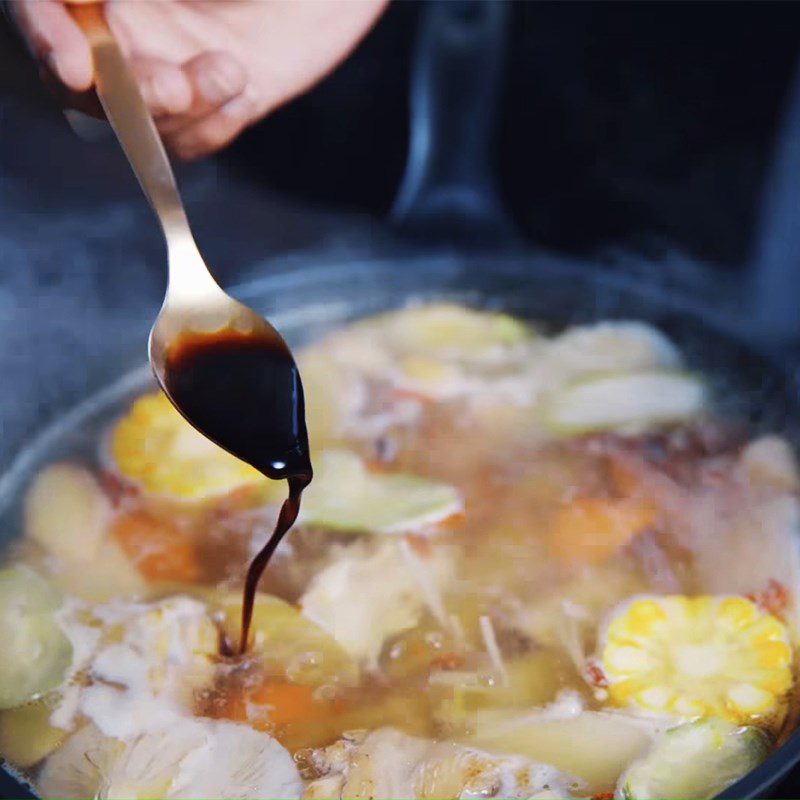
-
Completion
Cook the broth for about 2 more minutes, then add kelp (Konbu).
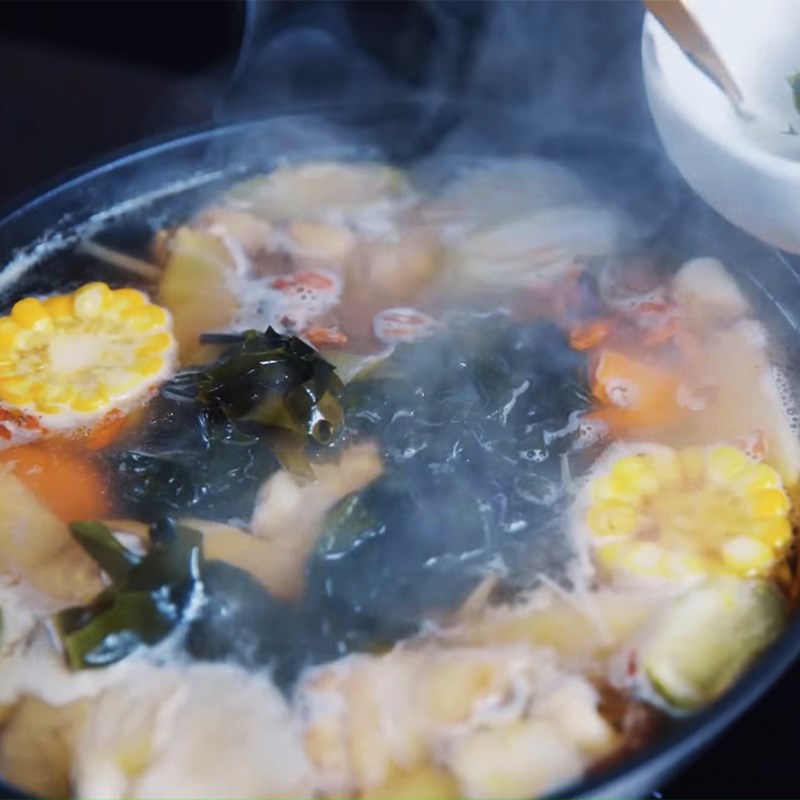
-
Final Product
Seafood Udon is a combination of the sweet, fresh taste of vegetables along with the refreshing flavor of seafood, creating a wonderful dish.
In just a few minutes, you can have your own authentic Japanese Udon. With various types of vegetables and seafood, it will bring many flavors to the family meal.
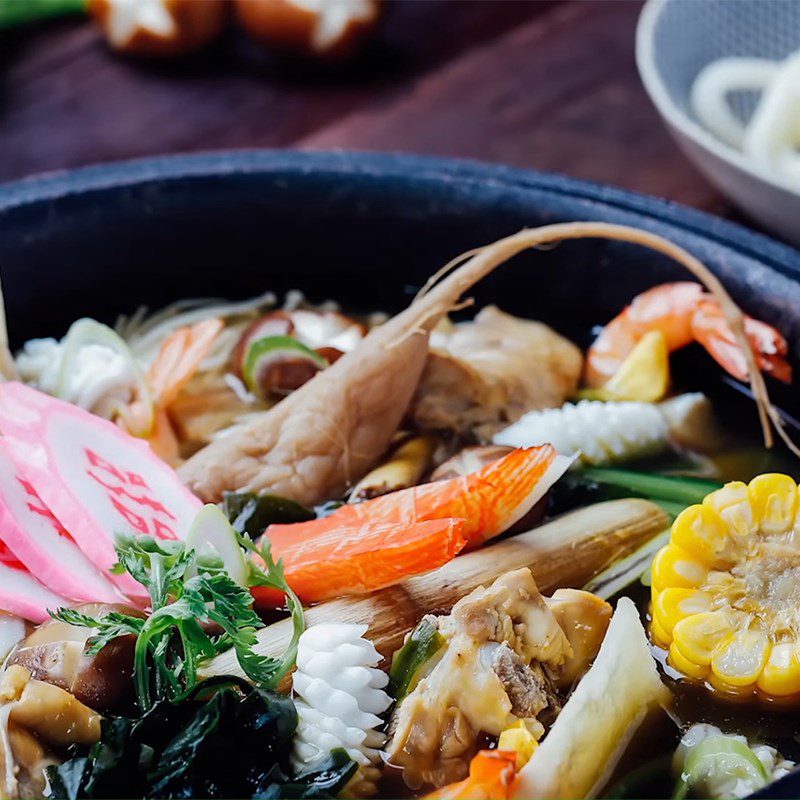
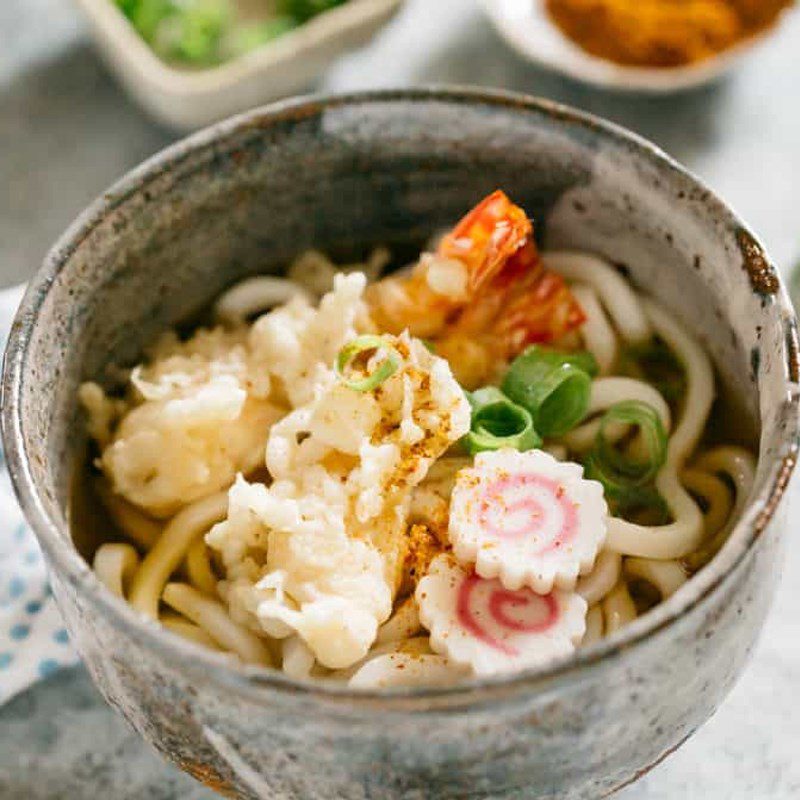
3. Octopus Udon
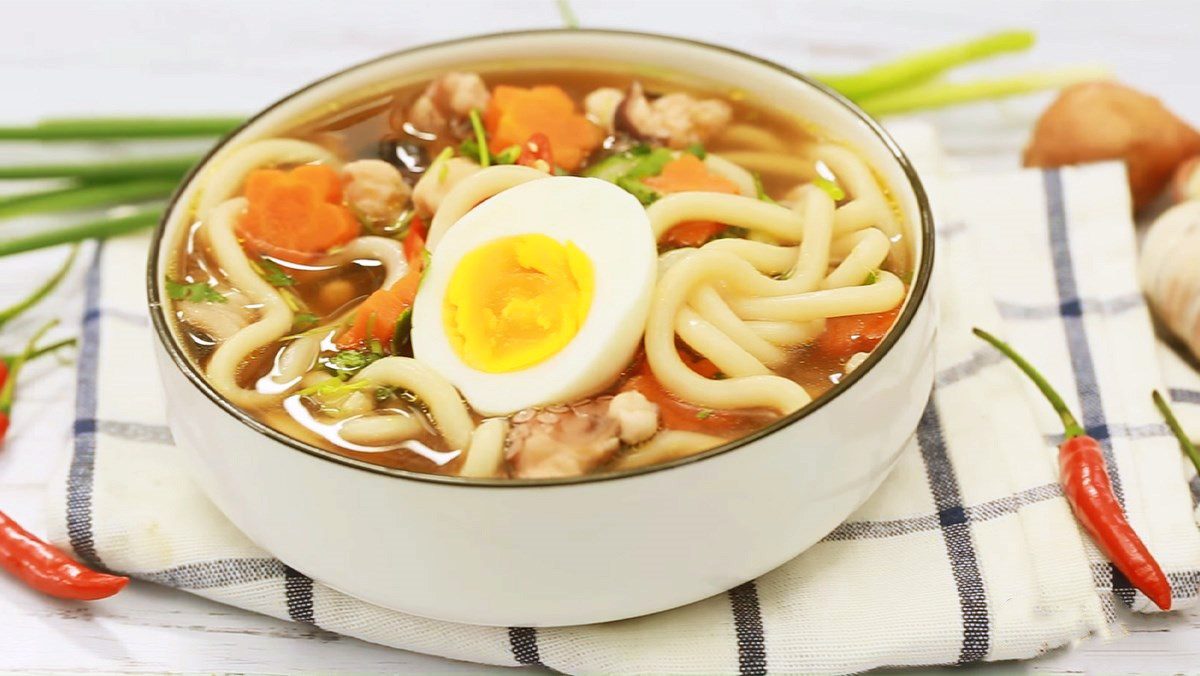
-
Preparation
25 minutes
-
Difficulty
Medium
Ingredients for Octopus Udon Noodles Serves 2
Minced garlic a little Octopus 500 gr Soy sauce 4 tablespoons Sugar 1/2 tablespoon Udon noodles 1 pack Egg 1 Carrot 50 gr
How to choose fresh and delicious octopus
- The dish is best when you choose fresh and delicious octopus; it is best to select those that can still move flexibly, with bright eyes.
- For frozen octopus, choose those with a slightly gray-brown color; the natural color should not be too dark or too light.
- Octopus with bright white flesh and smooth, shiny skin is recently frozen, and you can purchase it.
Ingredient images
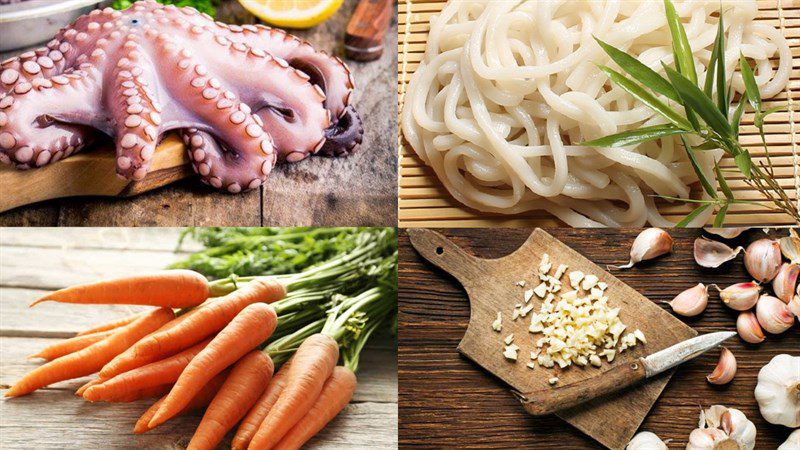
How to prepare Octopus Udon Noodles
-
Prepare the octopus
Wash the octopus with water, separate the tentacles from the body, and then cut the head of the octopus in half.
After cutting the head of the octopus, remove all the internal organs and then gently wash the octopus with salt and use your hands to gently squeeze the octopus to remove the slime. Rinse with water until clean.
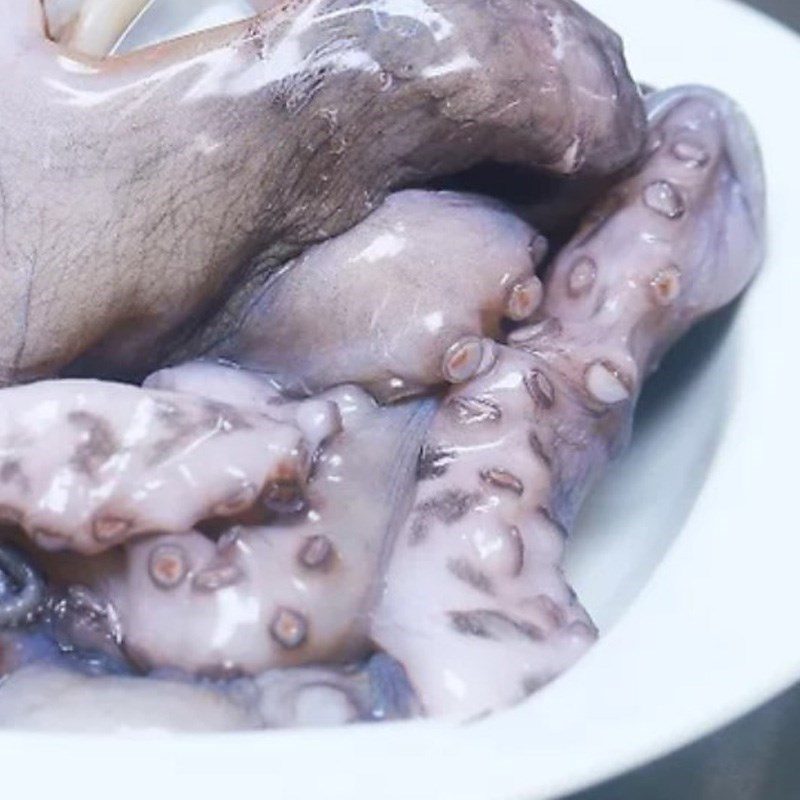
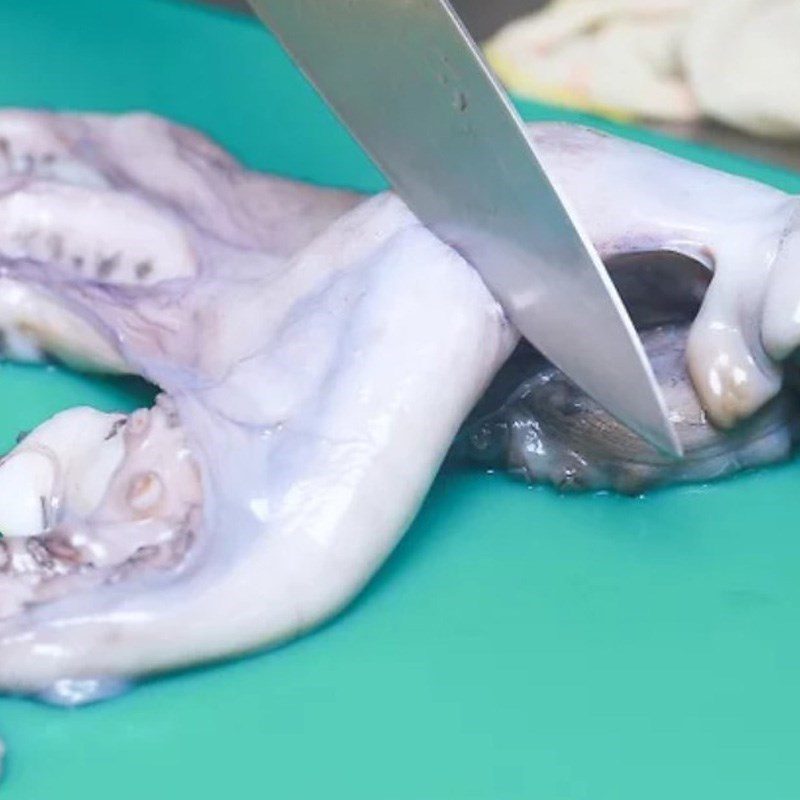
-
Boiled eggs
Put a pot of water on the stove, when the water boils, add the eggs and boil for about 10 minutes, then take the eggs out and peel them.
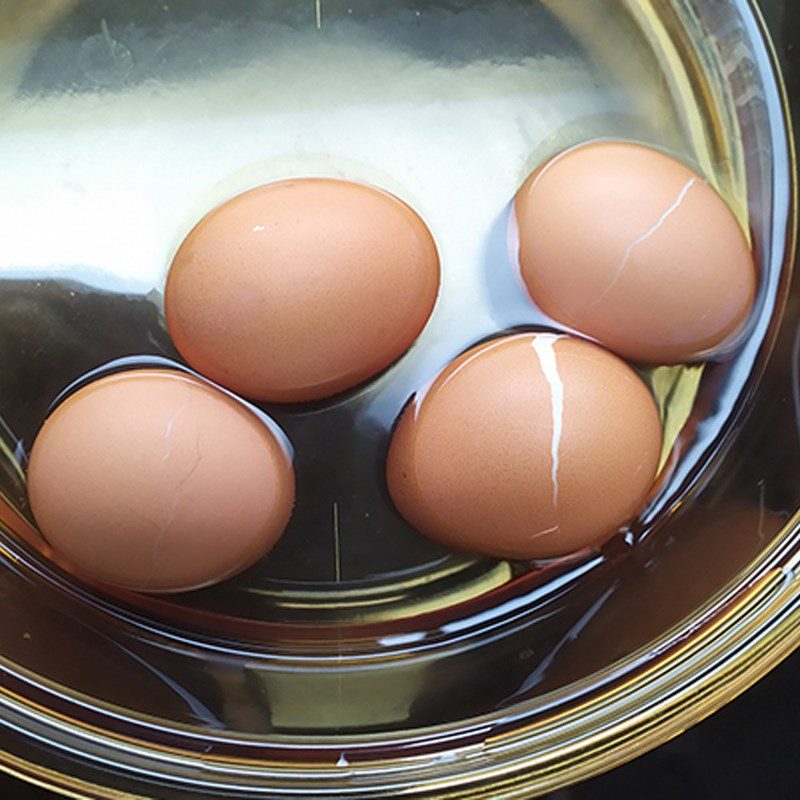
-
Cook udon broth
Put a pot on the stove, add a little cooking oil and sauté the garlic until fragrant, then add the octopus and stir-fry for about 1 minute until the octopus is firm, then add 2 tablespoons of soy sauce and stir well.
Add about 300ml of water to the pot, continue to add 2 tablespoons of soy sauce, 1/2 tablespoon of seasoning, and 1/2 tablespoon of sugar, wait for the water to boil and skim off the foam.
Add carrots and cook for about 2 minutes, then add udon noodles and stir well, cook for another minute and then turn off the heat.
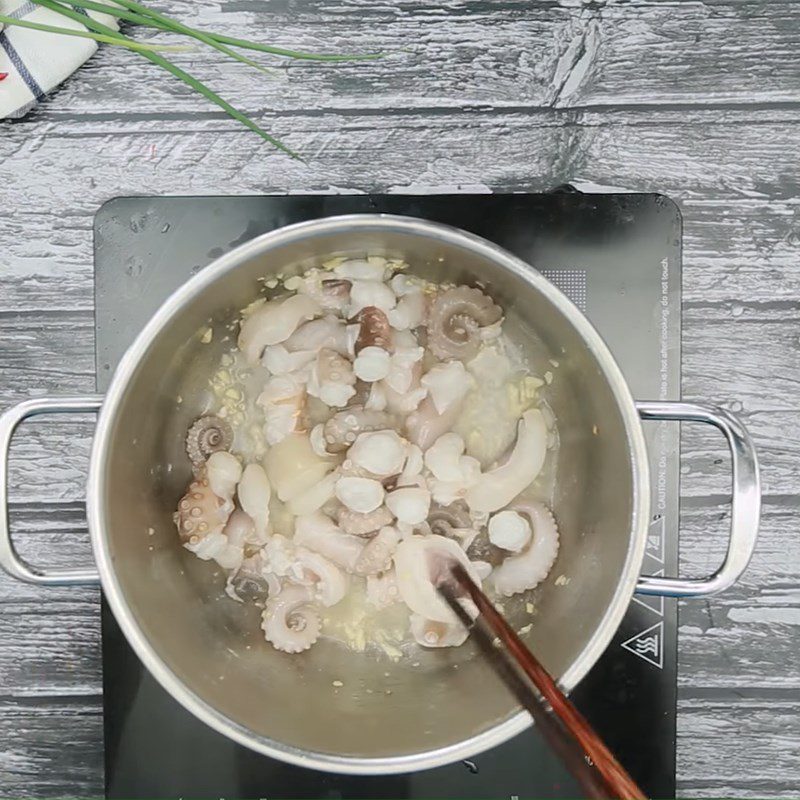
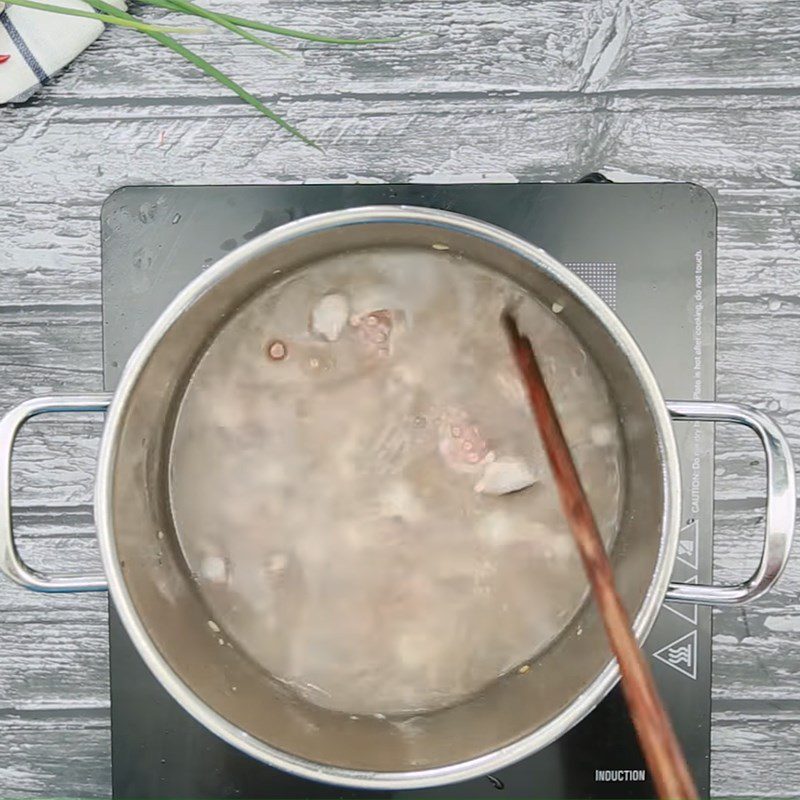
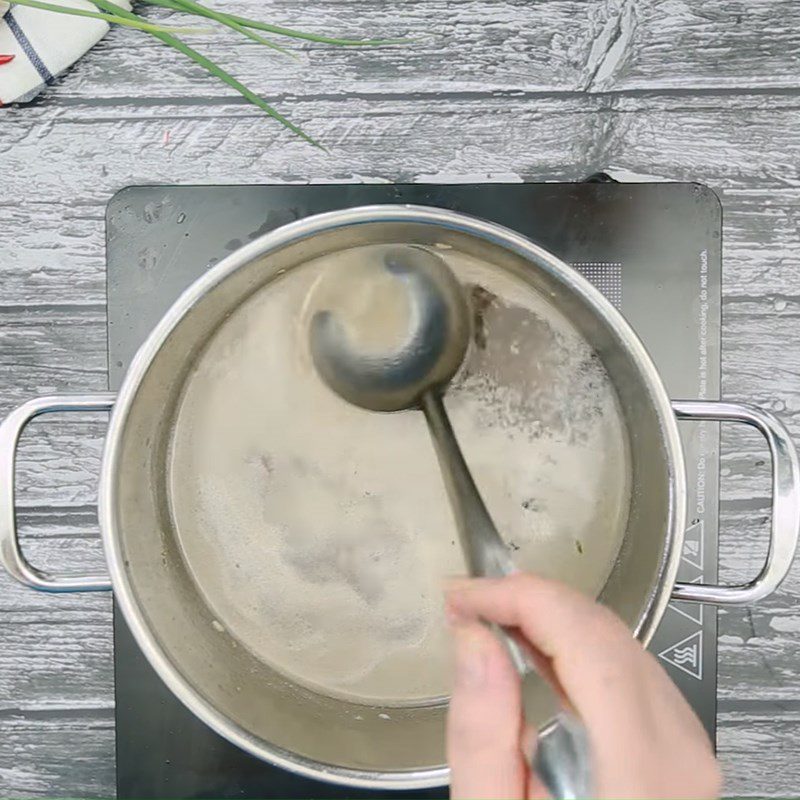
-
Add udon noodles and finish
Add carrots and cook for about 2 minutes, then add udon noodles and stir well, cook for another minute and then turn off the heat.
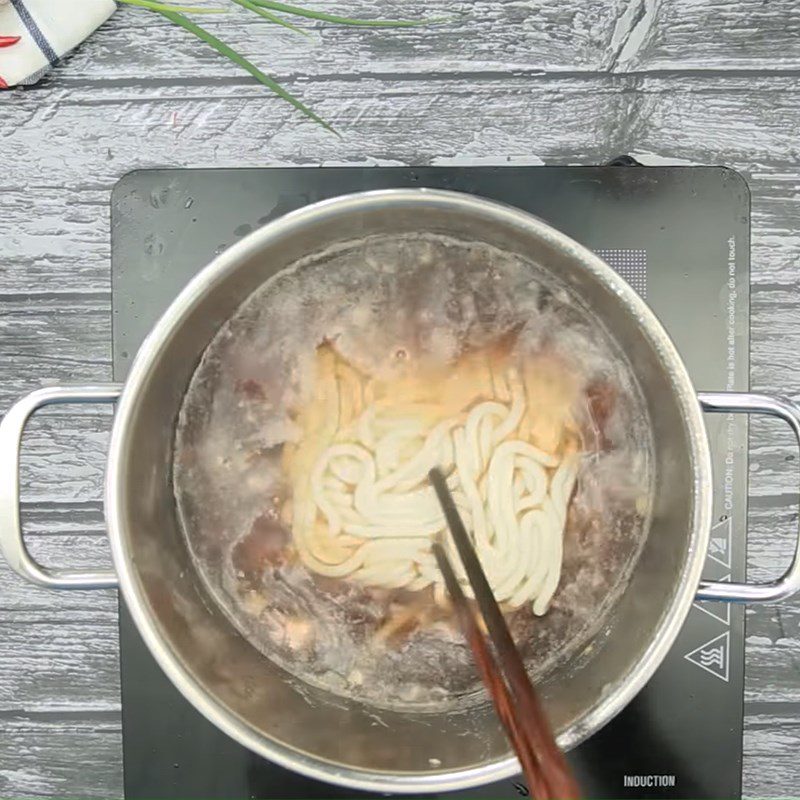
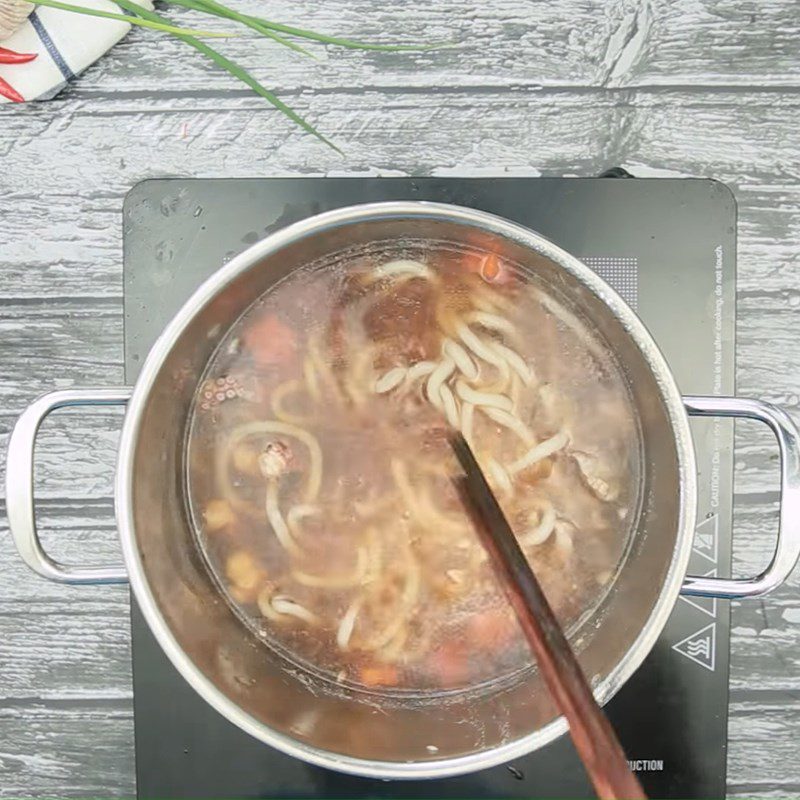
-
Final Product
Soft udon noodles combined with delicious sweet broth and chewy squid make this dish wonderful.
Fresh octopus udon with tender squid and mild sweet broth. Slurping a spoonful of broth along with a piece of octopus and noodles will make you crave a second bite.
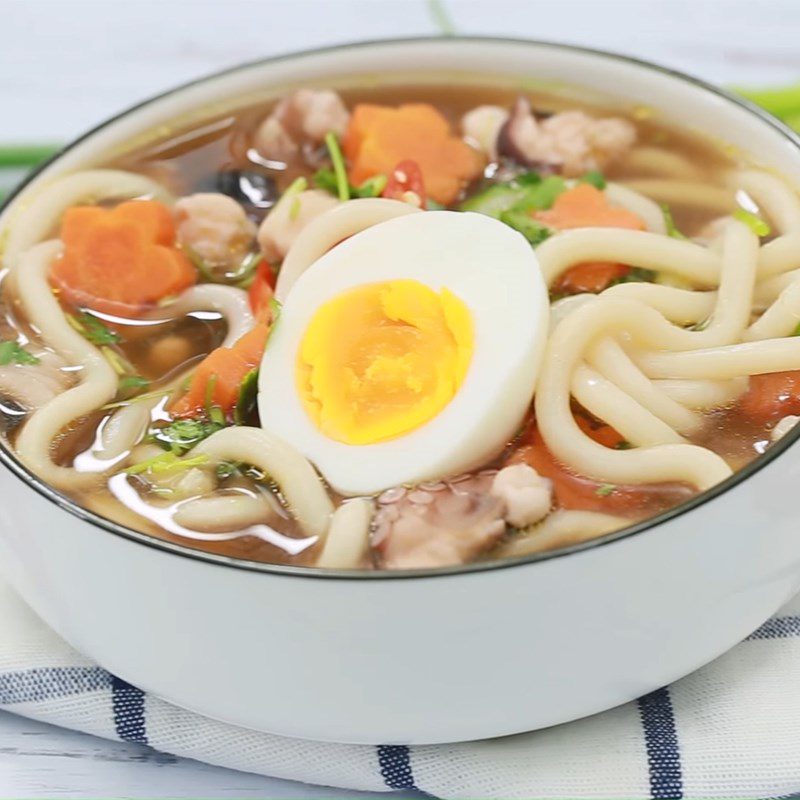
Tips for successful execution:
You should blanch the udon noodles for about 2 minutes before cooking, then rinse with cold water to remove impurities and firm up the noodles.
See more:
With 3 ways to cook udon noodles, we hope to make your home menu more diverse. Wishing you success with the recipe from TasteVN.
*The recipe and images are referenced from the YouTube channel Hướng Nghiệp Á Âu, Vua Nội Trợ, and Feedy VN
